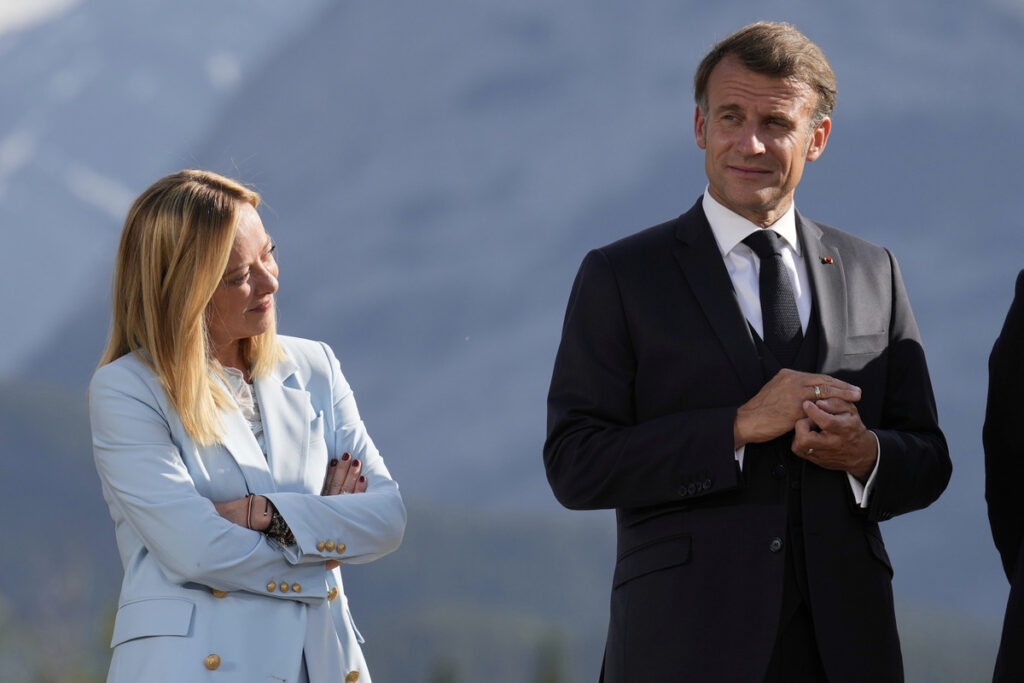“It’s a very big deal we’ve made,” President Donald Trump remarked in front of the world’s cameras on Monday, sitting next to NATO’s chief, Mark Rutte, in the Oval Office.
“Mr. President, dear Donald, this is really big,” Rutte said.
Trump on Monday said the United States would ship “billions of dollars’ worth” of military equipment to NATO members, paid for by the alliance, to be handed over to Ukrainian forces battling grinding Russian advances. Trump had earlier this month suggested NATO would “100 percent” pay for U.S. weapons, which would be sent to Ukraine.
Germany, the United Kingdom, the Netherlands and Canada will be involved, Rutte said, as well as the Nordic nations of Finland, Denmark, Sweden, and Norway.
The agreement was a fresh indicator of Trump’s growing irritation with Russian President Vladimir Putin and stalled progress toward the ceasefire Trump had pledged to secure in Eastern Europe. It was also a marker of underlying, unsolved tensions in Europe as the alliance attempts to paint itself as more united than ever.
The French government will not join the initiative because of its emphasis on piecing together Europe’s defense industrial base, Politico reported on Tuesday, citing two French officials. Italy will also refrain from participating, according to the Italian daily newspaper La Stampa.
Newsweek reached out to the French and Italian governments for comment via email.
Paris has been at the forefront of pushing for investment in the European defense industry, particularly in French manufacturing, Ed Arnold, a senior research fellow for European security at the Royal United Services Institute (RUSI), a prominent U.K.-based defense think tank, told Newsweek.
Italy, meanwhile, does not feel as alarmed by Russia as other NATO nations, and is “just not choosing to buy European or American in large quantities,” said Arnold.
France and Italy had hoped for a similar deal to the one lauded in the Oval Office, which would have involved orders of the Franco-Italian SAMP-T ground-based air defense system, rather than Patriots, according to a French industry source.
But the capacity to produce significant numbers of SAMP-Ts quickly just isn’t there yet, and France’s air force wants to ensure it has held back enough air defense systems to shield its airborne nuclear deterrent, the source told Newsweek.
It’s “extremely raw” as an issue, but there is an understanding that there are some capabilities that Europe’s defense industry can’t currently produce, a NATO official from a Baltic state told Newsweek.
Trump’s return to the White House sparked anxiety in Europe, a continent that has historically relied heavily on Washington to support its militaries. However, the Trump administration’s long-held and publicly expressed frustration with Europe’s scant defense spending successfully led to a major pledge at last month’s NATO summit, where the alliance promised to reach 5 percent of GDP on defense. Such a commitment was deemed entirely unrealistic at the start of the year.
Europe and Canada walk a tightrope between wanting to keep the U.S. engaged in the continent’s security and weaning NATO’s non-U.S. members off a dependence on the country’s equipment. While NATO broadly agrees Europe needs (and will) surge defense spending, the industrial strategy is less clear, and differences between the priorities of individual countries remain stark.
There are pressing questions still to be answered about how rapidly the European defense industry will be able to expand, particularly in the next year or so. Europe will struggle to produce equipment in the short and medium term, meaning governments will have to look to the U.S. and other countries, such as South Korea, for immediate needs, Arnold told Newsweek.
“Defense industry is still the stickiest part of NATO unity,” he said.
Rutte said the deal would put “really massive numbers” of vital supplies, including air defense, in Ukraine’s hands. Trump stated that Ukraine would receive an unspecified number of Patriot systems “within days.”
Patriot systems, manufactured by the U.S. defense company Raytheon, are the most sought-after ground-based air defense systems, capable of intercepting Russia’s advanced weapons and ballistic missiles. Ukraine has frequently appealed for more Patriot batteries, which are composed of several components, including radars, launchers, and interceptor missiles, as well as a command and control center.
Zelensky said on July 10 that Germany would fund the purchase of two Patriot systems, while Norway would finance a third. U.S. Air Force Lieutenant General Alexus Grynkewich, who recently took over as NATO’s top military commander, said on Thursday that the German Patriot would be transferred “as quickly as possible.”
Trump said an unnamed nation could provide all or at least the better part of “17 Patriots.”
It was unclear which parts of the Patriot system the president was referring to.
“Seventeen is a huge number if we are talking about batteries,” Major General Vadym Skibitsky, the deputy head of Ukraine’s GUR military intelligence agency, told the Guardian on Tuesday. “If it’s launchers, that’s possible.”
Ukraine has faced intensified Russian aerial attacks in recent months, despite U.S. efforts to bridge the gap between Moscow and Kyiv.
Ukraine signed up to an American proposal in March, but the Kremlin has refused to ink its consent, upping its strikes on the war-torn country. The U.S. has also repeatedly paused military aid deliveries to Ukraine, including Patriot interceptors.
Trump, who had long held off on criticizing the Russian president, has increasingly made his frustration with Putin known. “I’m disappointed in him, but I’m not done with him,” Trump told the BBC earlier this week.
Read the full article here

